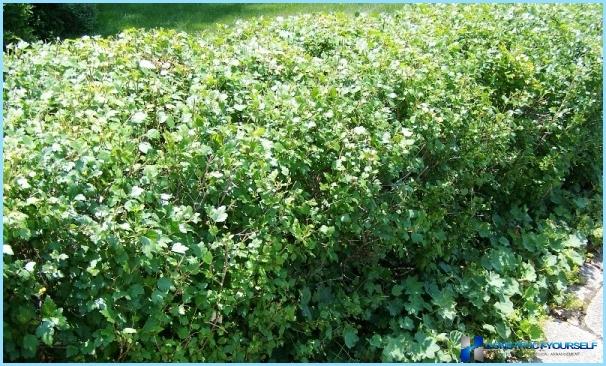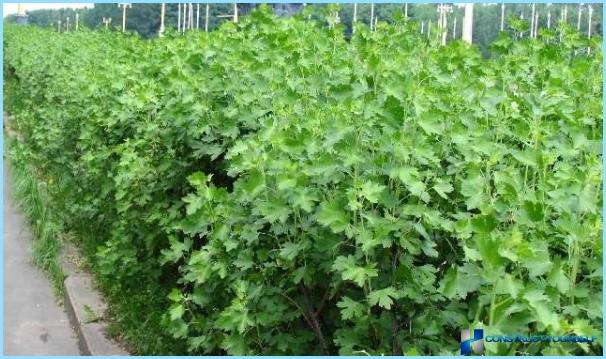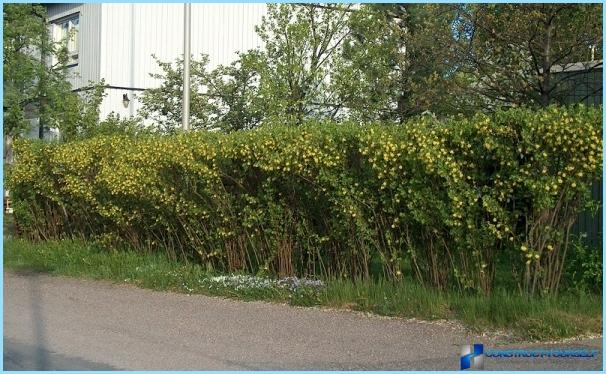For those modern owners of cottages who don’t like brick and wood fences, we offer to think about creating hedges of varied bushes. The first such green fences appeared in France in the 18th century. Wealthy landowners planted currant bushes around their estates, protecting the house from wind, dust.
Feature hedges ↑
It implies a linear fit one or several rows of bushes or trees at a slight distance. Depending on the height of the fence is divided into three types:
- undersized;
- medium;
- tall.
Characteristics of the main varieties:
- black currant is suitable for the organization on site of a living fence. This shrub reaches a height of 2 metres. Have Bush three or five-lobed leaves, bell-shaped flowers, black or brown berries. Matures shrub in late summer, its fruits are used in medicine;
- Golden currant is used for forming living fences ornamental and as rootstock for growing gooseberries. The shrubs reach a height of 2-3 meters, abundantly blooming Golden flowers.
Options reproduction ↑
For cultivation of this shrub you can use three ways:
- cuttings;
- division of plants;
- horizontal layers.
This shrub is a wonderful honey plant, its flowers are used to brew herbal tea. The berries of the Bush – the basis for delicious jams and aromatic fruit compotes.
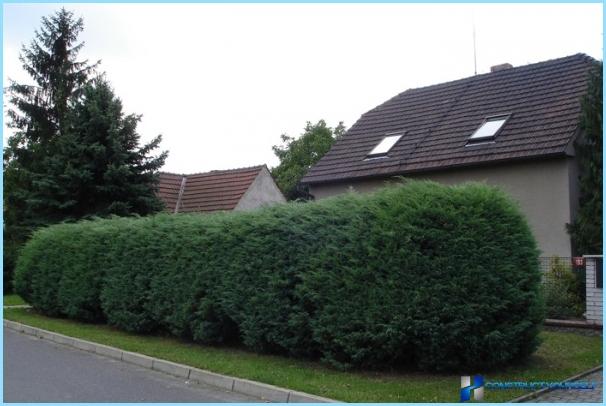
The value of the currant ^ the
The berries of this plant is recommended for the following diseases: rheumatism, diabetes. Fresh juice can remove the bouts of ulcer, hypertension.
Tip! If you want the berries were sweet and large, planted shrub for Sunny areas.
Features of cultivation ^ the
Growing currants, note the following features:
- the plant is resistant to drought, grows well in all regions of our country, not in need of special care, constant watering;
- before planting, it is desirable to amend was prepared under the plant pit 500 grams of wood ash and a glass mold;
- fruiting occurs in 3-4 year after planting. Preferably each spring to amend the soil with organic fertilizer;
- irrigation is required during the formation of the berries, the rest of the currants watered as needed;
- shrubs need shaping, cutting shears old branches, primitiva 1-2 meters from the ground annual shoots;
- when growing shrubs for decorative purposes only, the formation of Bush perform at the height of 40-60 cm.
Varieties of currant ↑
Currently displayed 14 varieties of this berry, the Gift of Altai, Isabella, Barnaul, IDA, Muscat, Levushka, Ermak, Valentina, Siberian honey, orange, Autumn cherry, etc. This shrub designers of landscapes by chance chose to design hedges. In addition to the beautiful flowering, you can get a delicious and healthy fruit.
One of the types of ornamental currant Golden currant is widely used by landscape designers for the formation of hedges. To taste the fruit of this variety cannot compete with black currants, but for decoration exceeds the usual currant bushes.
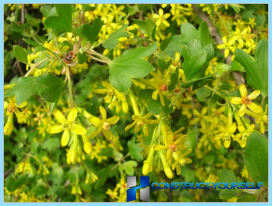
Large yellow flowers of this shrub suitable for a hedge and traditional hedgerows. Colorful leaves of currant in autumn time in the garden create a real fairy tale.
Advantages:
- the low cost of seedlings;
- resistance to pests and diseases;
- easy care.
This plant is a powerful shrub, which can reach a height of two meters. Shrub perfectly tolerate cold, drought, it is not dangerous pests and diseases. Shrub able to grow in any soil, flowering occurs in early spring. In the spring small shrub covered with large yellow flowers, and in autumn the spectacular colors of foliage. Golden currant is perfectly located for both conventional and tapestry hedges.
Scalloped trimming hedges worked by the gardeners of Ancient Rome. Already in those days they were doing in the garden unique art pieces from living plants. You will also be able in your garden to grow a thick cap of currant, to do this immediately after planting, it is important to loosen the ground around the bushes, remove weeds. Improper pruning, lack of sunlight, poor soil causes the death of the currant bushes. A hedge of currant in the case will be «to cope with their work», if it will be regular and proper care.

